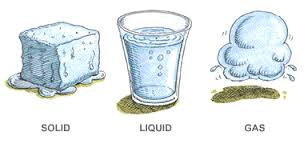I am going press on with my series of articles (tidbits) on type conversion functions available in the Transaction SQL (T-SQL) language. One analogy of a data type conversion is apply the correct action to change the physical form of water (H2O). You can convert water to ice by cooling it. You can convert water to vapor by heating it. However, the chemical composition of water is still the same! Information is stored in a database as rows in a table. Each field in a table is defined with a…
Tag: SQL Server
Conversion Functions – CONVERT()
I am going to start a series of articles (tidbits) on type conversion functions available in the Transaction SQL (T-SQL) language. One analogy of a data type conversion is apply the correct action to change the physical form of water (H2O). You can convert water to ice by cooling it. You can convert water to vapor by heating it. However, the chemical composition of water is still the same! Information is stored in a database as rows in a table. Each field in a table is defined with a certain…
Error Handling – Part 2
I am going to continue my articles on controlling the execution flow of statements in a Transaction SQL (T-SQL) program. Every program has to be deterministic on what step to execute next. Otherwise, the computer would be clueless on what to do next. The only exception to this rule is error handling. A runtime error may cause the program to branch to a error handler and exit the program. Today, I want to talk about how to use the TRY/CATCH constructs to detect and handle errors. I consider this new…
Error Handling – Part 1
I am going to continue my articles on controlling the execution flow of statements in a Transaction SQL (T-SQL) program. Every program has to be deterministic on what step to execute next. Otherwise, the computer would be clueless on what to do next. The only exception to this rule is error handling. A runtime error may cause the program to branch to a error handler and exit the program. Today, I want to talk about how to use the @@ERROR system function to determine if an error occurred. This function…
Controlling The Flow – Part 4
I am going to continue my articles (tidbits) on controlling the execution flow of statements in a Transaction SQL (T-SQL) program. Every program has to be deterministic on what step to execute next. Otherwise, the computer would be clueless on what to do next. The only exception to this rule is error handling. A runtime error may cause the program to branch to a error handler and exit the program. Today, I want to talk about how to use the GOTO statement. I never use this statement during my coding…
Controlling The Flow – Part 3
I am going to continue my articles (tidbits) on controlling the execution flow of statements in a Transaction SQL (T-SQL) program. Every program has to be deterministic on what step to execute next. Otherwise, the computer would be clueless on what to do next. The only exception to this rule is error handling. A runtime error may cause the program to branch to a error handler and exit the program. Today, I want to talk about how to use the BREAK and CONTINUE statements. I hardly ever use these statements…
Controlling The Flow – Part 2
I am going to continue my articles (tidbits) on controlling the execution flow of statements in a Transaction SQL (T-SQL) program. Every program has to be deterministic on what step to execute next. Otherwise, the computer would be clueless on what to do next. The only exception to this rule is error handling. A runtime error may cause the program to branch to a error handler and exit the program. Today, I want to talk about waiting a time period before executing a statement. The WAITFOR statement was introduced in…
Controlling The Flow – Part 1
I am going to write a few articles (tidbits) on controlling the execution flow of statements in a Transaction SQL (T-SQL) program. Every program has to be deterministic on what step to execute next. Otherwise, the computer would be clueless on what to do next. The only exception to this rule is error handling. A runtime error may cause the program to branch to a error handler and exit the program. Today, I want to talk about looping for repetition, statement blocks, and conditional execution. Some programming languages support the…


